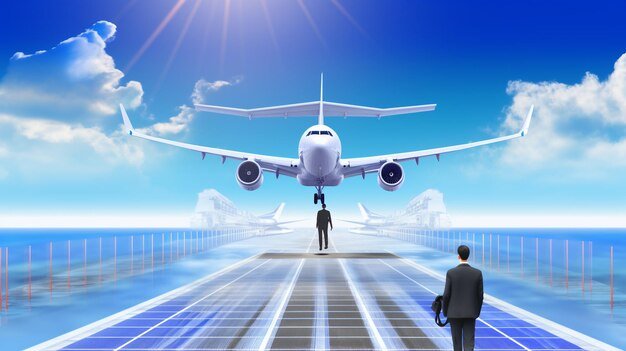Becoming a pilot is a dream for many aviation enthusiasts, but the path to earning a pilot’s license can take many forms. From flying for personal pleasure to piloting large commercial aircraft, there are several types of pilots, each with specific qualifications, responsibilities, and career opportunities. In this article, we’ll break down the different types of pilots, what they do, and how to become one.
Commercial Pilots
Commercial pilots are among the most well-known in the aviation world. They are licensed to fly for compensation or hire, which typically means they fly passengers or cargo for airlines, charter services, or other commercial purposes. Commercial pilots can operate various types of aircraft, including small planes and large jets.
To become a commercial pilot, one must hold a Commercial Pilot License (CPL), which requires passing written exams, completing a specified number of flight hours, and undergoing a flight test. Commercial pilots must also have excellent knowledge of aviation regulations, navigation, and meteorology. Many commercial pilots start with a private pilot license (PPL) and work their way up through additional training and experience.
Commercial pilots often work for airlines, flying scheduled passenger flights, or for charter companies, flying clients to various destinations. In addition, some commercial pilots work in aerial photography, agricultural services, or flying cargo. This is a demanding profession that requires not only technical flying skills but also the ability to manage passengers and cargo efficiently.
Private Pilots
Private pilots are licensed to fly aircraft for personal use, but they are not allowed to charge for their services. This means they can fly for leisure, travel, or family trips but cannot be hired for commercial services. Private pilots have more flexibility in terms of the aircraft they operate, but they are restricted from carrying passengers or cargo for compensation.
To become a private pilot, one needs to obtain a Private Pilot License (PPL). This is generally considered the first step for those aspiring to become professional pilots, as it requires a lower number of flight hours compared to a commercial license. Private pilots must also pass written and flight tests and demonstrate their proficiency in basic flying skills, navigation, and emergency procedures.
Private pilots typically fly light aircraft, ranging from small single-engine planes to slightly larger multi-engine aircraft. The role of a private pilot can vary, from flying for personal leisure to operating aircraft for flying clubs or other non-commercial purposes.
Airline Transport Pilots (ATP)
Airline Transport Pilots (ATPs) are the highest level of pilots in terms of qualifications and experience. These pilots are responsible for commanding commercial airliners, often flying large groups of passengers over long distances, domestically or internationally. ATPs are required to have extensive flying experience, advanced technical knowledge, and the ability to handle complex flight operations.
To become an ATP, a pilot must accumulate thousands of flight hours (usually 1,500 or more), hold a commercial pilot license, and pass additional written exams and flight tests. ATPs are often employed by airlines, but they can also be found working in other industries, such as cargo transport and flight schools. Many commercial pilots aspire to obtain their ATP, as it opens up higher-paying and more prestigious career opportunities.

Cargo Pilots
Cargo pilots, also known as freight pilots, specialize in transporting goods rather than passengers. They work for companies like FedEx, UPS, and other logistics firms, flying large cargo planes across the country or even internationally. Cargo pilots are responsible for safely loading, transporting, and unloading goods, including perishable items, hazardous materials, and general freight.
Becoming a cargo pilot typically requires a commercial pilot license, with additional training and certifications depending on the type of cargo being transported. This type of flying can be demanding, as cargo pilots often work night shifts or long hours, sometimes flying multiple routes in a single day.
Military Pilots
Military pilots are a unique subset of aviation professionals. They are responsible for flying aircraft for national defense and security purposes, including fighter jets, bombers, and surveillance planes. Military pilots undergo extensive training, which is provided by the armed forces. They often perform missions that involve air combat, reconnaissance, transport, or search and rescue.
To become a military pilot, individuals must enlist in the armed forces and undergo rigorous training, both physically and mentally. Military pilots typically have a higher level of technical training than civilian pilots, as they are trained to operate complex aircraft in high-stress situations. They also receive specialized training in combat tactics, emergency procedures, and national defense operations.
Agricultural Pilots
Agricultural pilots are specialized professionals who fly aircraft used in farming and agriculture. Their primary role involves crop dusting—spraying pesticides, herbicides, and fertilizers over large areas of farmland. They may also be responsible for aerial seeding or firefighting operations, which require specific skills and equipment.
To become an agricultural pilot, individuals need a commercial pilot’s license and additional training related to agricultural flying. This type of flying requires both precision and speed, as pilots must maneuver low over fields to ensure effective coverage of crops. Agricultural pilots typically fly smaller, specialized planes, and their work can be physically demanding due to the nature of the environment in which they fly.
Test Pilots
Test pilots are experts in flying new or experimental aircraft to evaluate their performance. They are responsible for conducting test flights to ensure that an aircraft meets safety standards and performs as expected under various conditions. Test pilots often work for aircraft manufacturers, military organizations, or aviation regulatory agencies.
Becoming a test pilot requires extensive flying experience and specialized training. Test pilots must have a deep understanding of aircraft systems and aerodynamics, as well as the ability to handle unexpected situations during high-risk flights. This role is one of the most challenging in aviation, as it involves testing cutting-edge technology and ensuring that new aircraft are safe for use.
Conclusion
There are many different types of pilots, each with its own responsibilities, training requirements, and career opportunities. Whether you’re flying commercially, privately, or even for agricultural or military purposes, each type of pilot plays an important role in the aviation industry. Understanding the different categories of pilots can help aspiring aviators decide which path they want to pursue and provide insight into the diverse and dynamic world of aviation.









